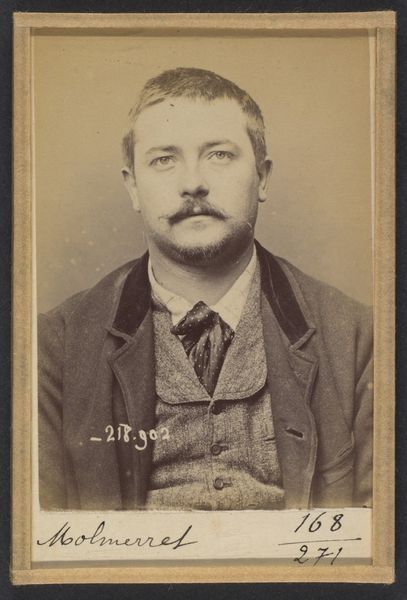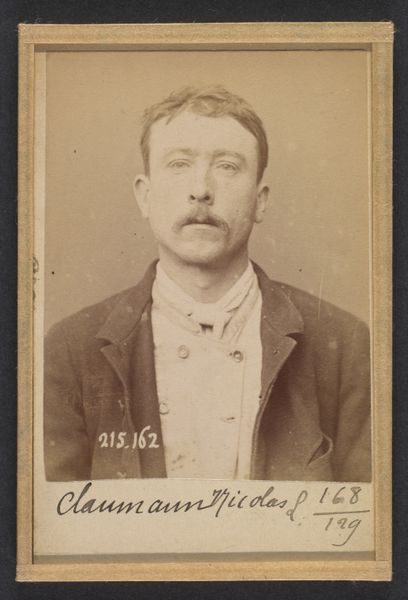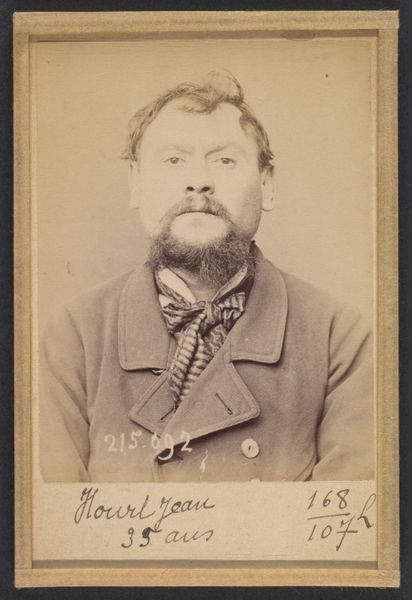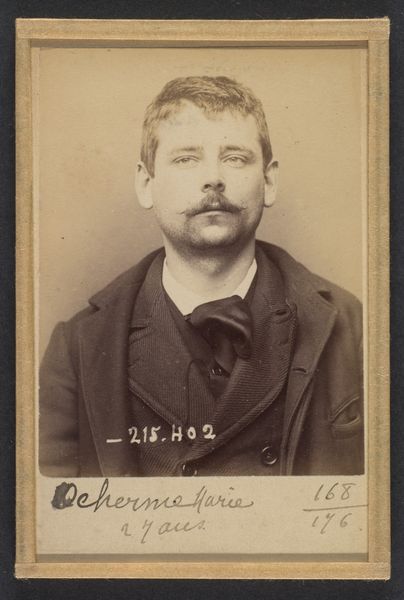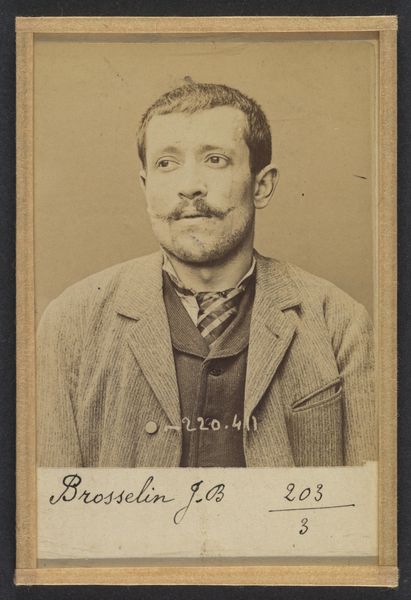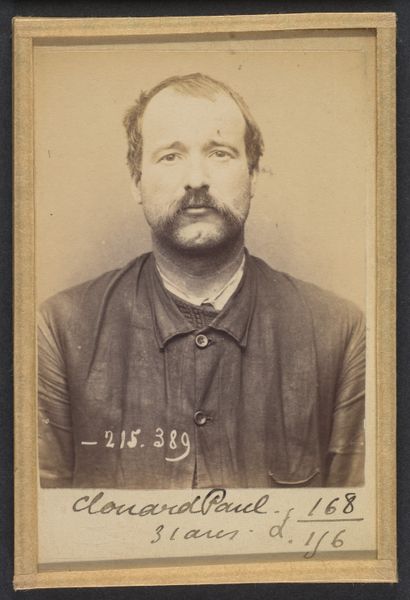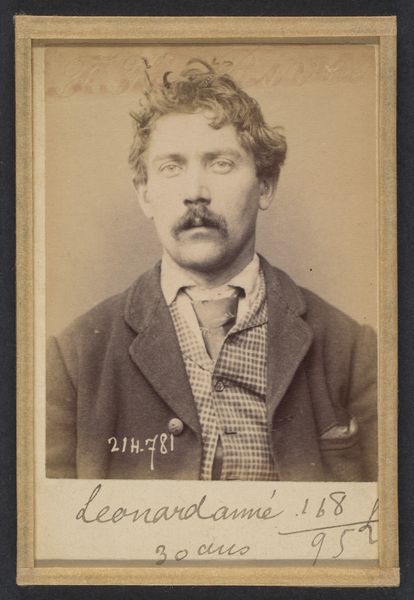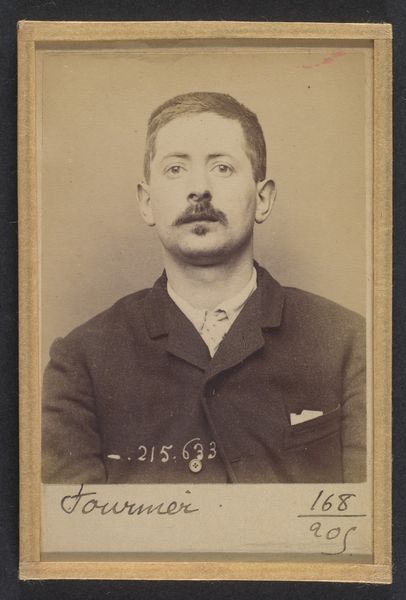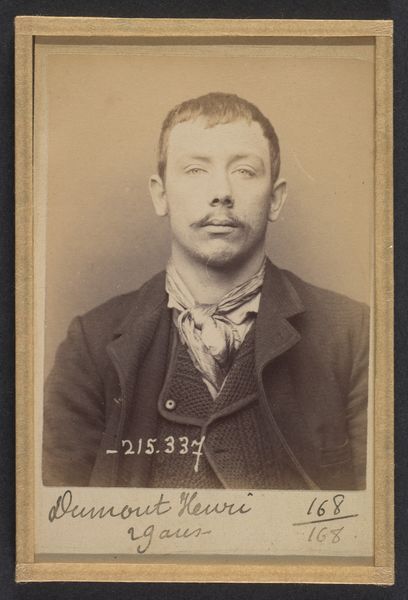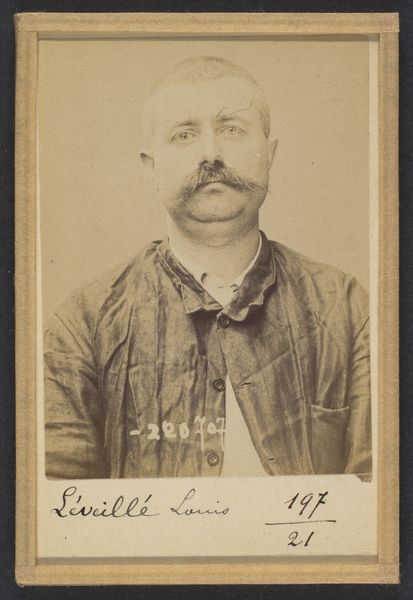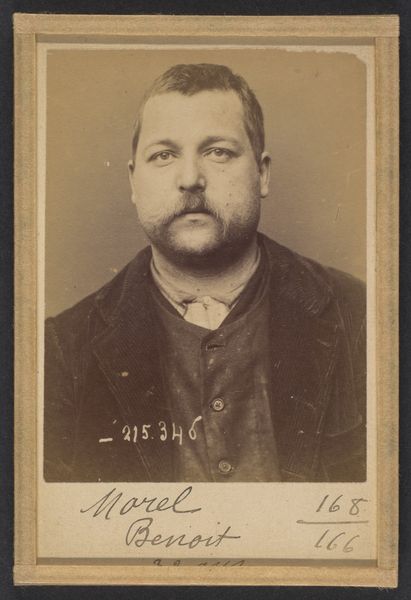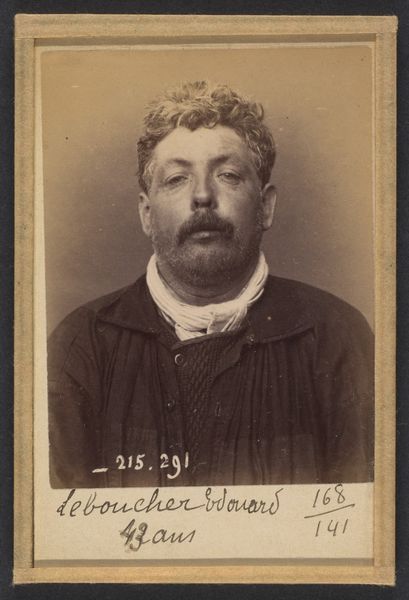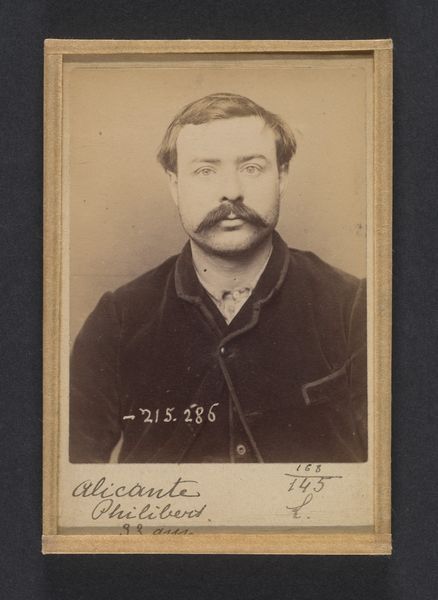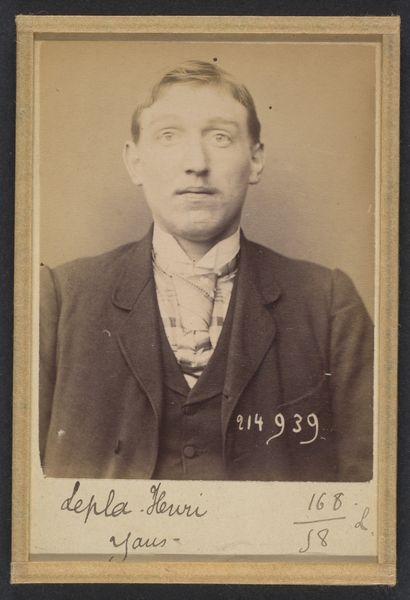
Alban. Jean-Louis. 35 ans, né à Paris. Plombier. Anarchiste. Fiché le 5/3/94. 1894
0:00
0:00
photography, photomontage
#
portrait
#
photography
#
photomontage
#
history-painting
#
academic-art
#
realism
Dimensions: 10.5 x 7 x 0.5 cm (4 1/8 x 2 3/4 x 3/16 in.) each
Copyright: Public Domain
Curator: Let's delve into this photograph now—a work produced in 1894 by Alphonse Bertillon, currently held at the Metropolitan Museum of Art. It is titled, "Alban. Jean-Louis. 35 ans, né à Paris. Plombier. Anarchiste. Fiché le 5/3/94." Editor: It projects an air of startling starkness, doesn’t it? The sepia tones amplify a certain bleakness. The composition, tightly framed, fixates on this single figure with what I perceive to be deliberate severity. Curator: Precisely. Bertillon was a French police officer and biometrics researcher, pioneering the "Mugshot" using photography for identification purposes. This work represents early criminal documentation. It presents a synthesis of photography and social control—a very calculated study in its composition. Editor: The symbolic implications here are substantial. "Alban" embodies the societal anxieties of late 19th-century France. The subject's disheveled hair and unkempt mustache juxtapose sharply against what appears to be a fairly nice scarf or ascot at his neck—signs, perhaps, of his trade or class. The inscribed notations along the bottom margin further reduce the human element by treating him as information. I feel an immediate dissonance from this depiction. Curator: The act of recording, the methodical approach, transformed individuals into data points. Bertillon systemized this classification of man, objectifying them. This speaks volumes about the societal pressures and evolving identity politics of the time. The photograph's rigid formality enhances this chilling detachment. Editor: Ultimately, the photograph succeeds by not just recording his image but trapping his essence as “Anarchist,” as labeled. As a viewer, I feel an inescapable weight of the moment the picture was captured, a life moment forever recorded by an institution of power, stripping his freedom, even his own self-narrative. Curator: Indeed, examining this historical artifact underscores photography's ability to not only capture a likeness, but also encode social attitudes. Editor: It serves as an enduring artifact of social practice and personal suffering.
Comments
No comments
Be the first to comment and join the conversation on the ultimate creative platform.
